Fiberglass Intake-
V0 – the learning experience.
A while ago, I 3d printed a mold of squashed intake, dissolved the plastic with a solvent mix and was left with a lightweight composite shell. Once it was done, I realized there were a few issues with the design, which will be apparent below. I still installed and ran it on Racecar for a short time.
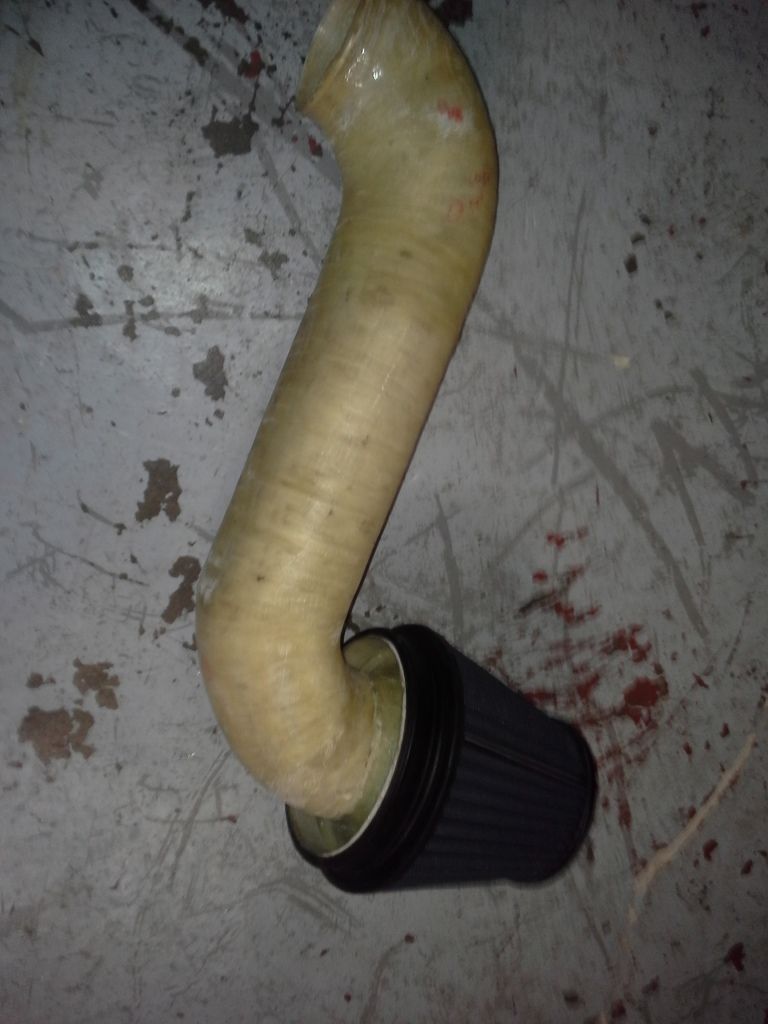
The 4” intake matches up to a short velocity stack and a 6” ID K&N filter.
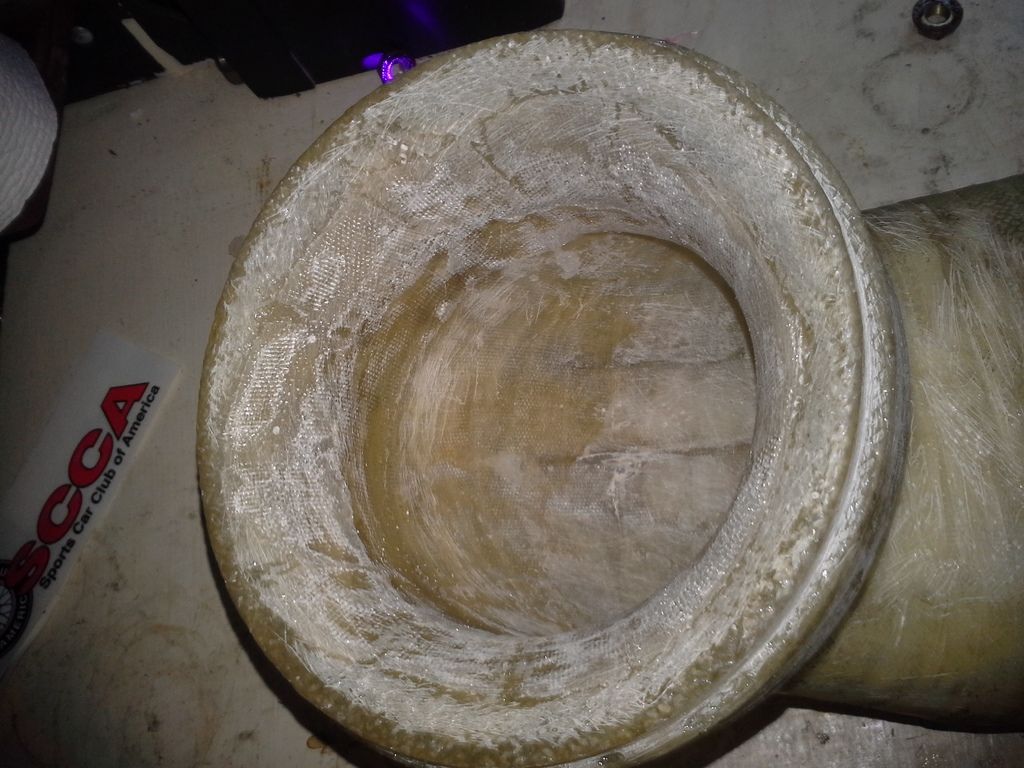
The pancake section fit well in racecar with the 8 cell LiPo, actually with excess room. The original design was modelled for a 3, and didn't fit perfectly lengthwise on the 6.
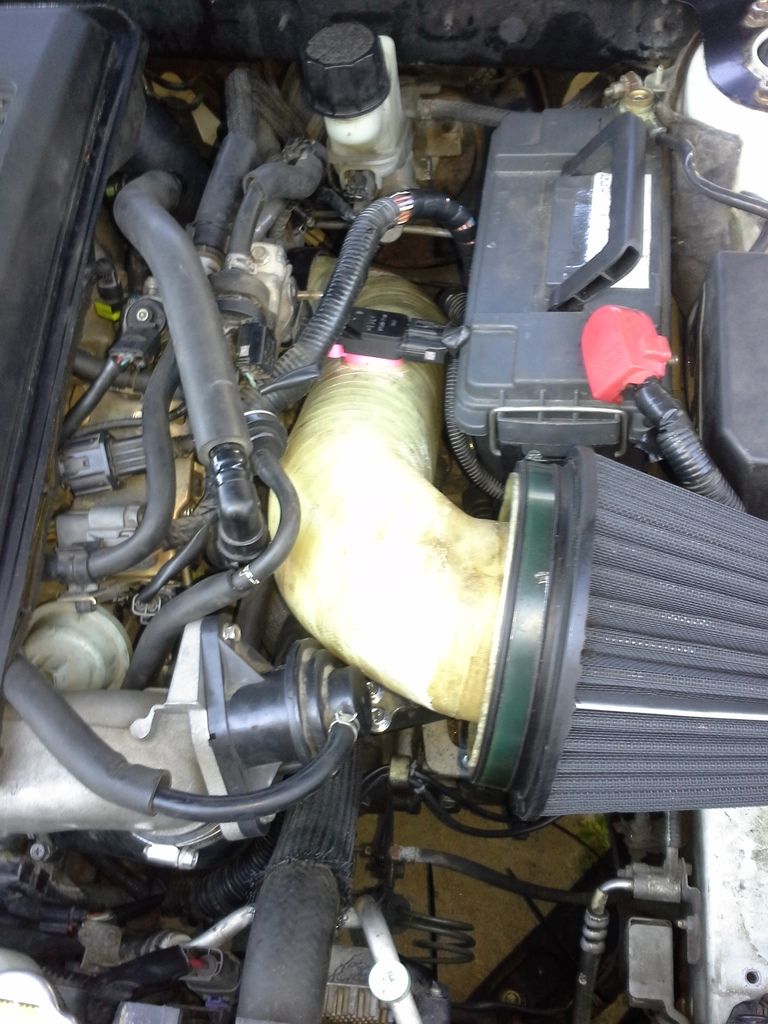
Limitations:
1. Placement of the MAF
The 90 degree turn and direct termination into the velocity stack meant that the longest area of straight air was in the center of the pancake section. Whoops. This means that clearance to the battery is tight for the MAF connector (but okay). Also, PLA plastic for the MAF housing does not hold up to the heat of the engine bay like ABS- but both plastics would likely have adherence problems to epoxy like below.
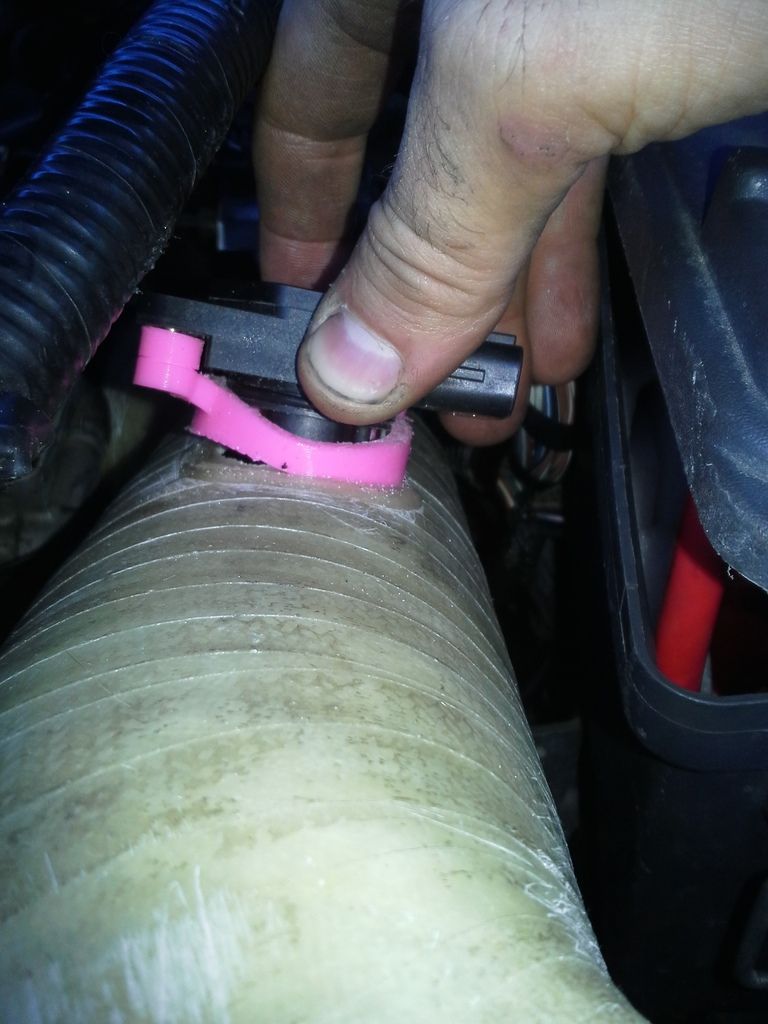
Placement of the MAF on top of the pancake section meant that the MAF was outside the dead center of the cross section of the intake- however I doubt this was a huge issue. The car ran well above 1.7v MAF volts, and trouble with calibration at lower voltages can be attributed to a crack that developed in the intake.
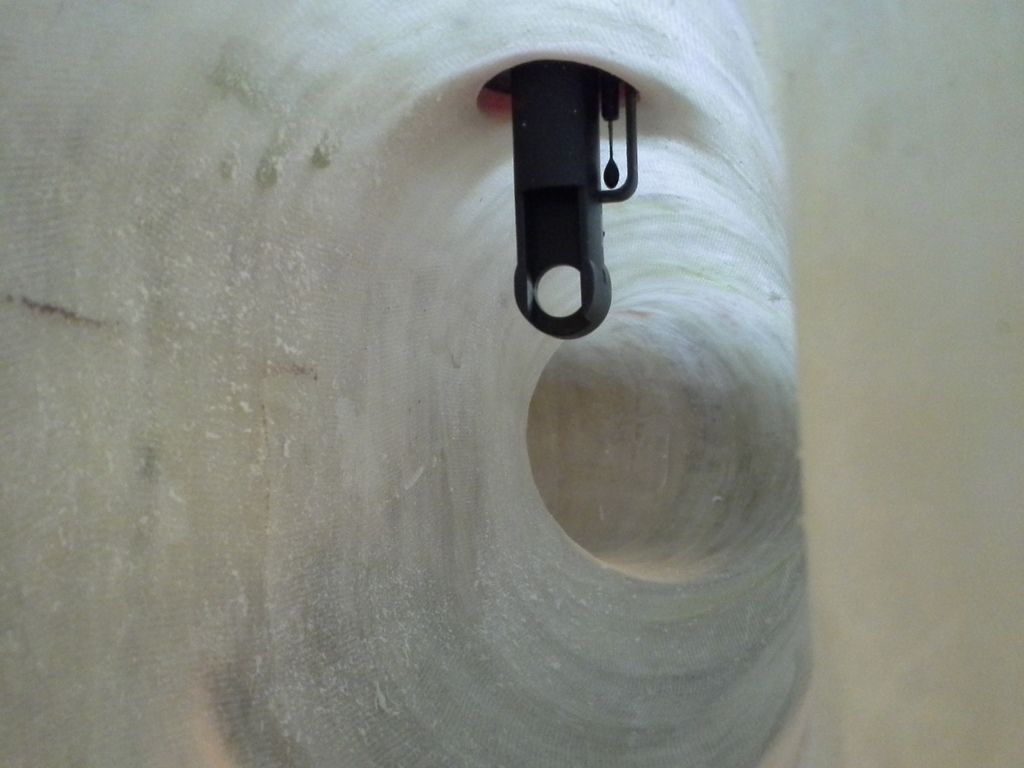
2. The Crack
A crack developed in the thinnest area: the outside of the bend with terminated at the turbo inlet.
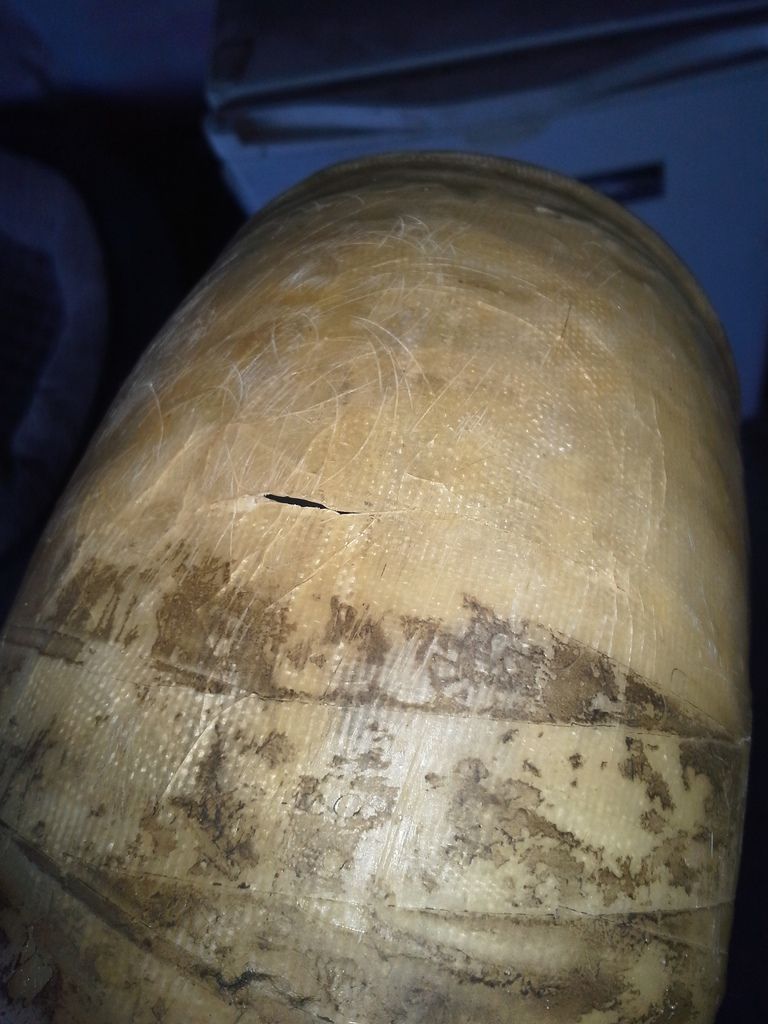
A cross sectional cut of the intake shows how thin the failed section is, as well as inadequate penetration of epoxy in the fiberglass (see the cracking of the epoxy that sat on top of the fiberglass weave, instead of penetrating.)
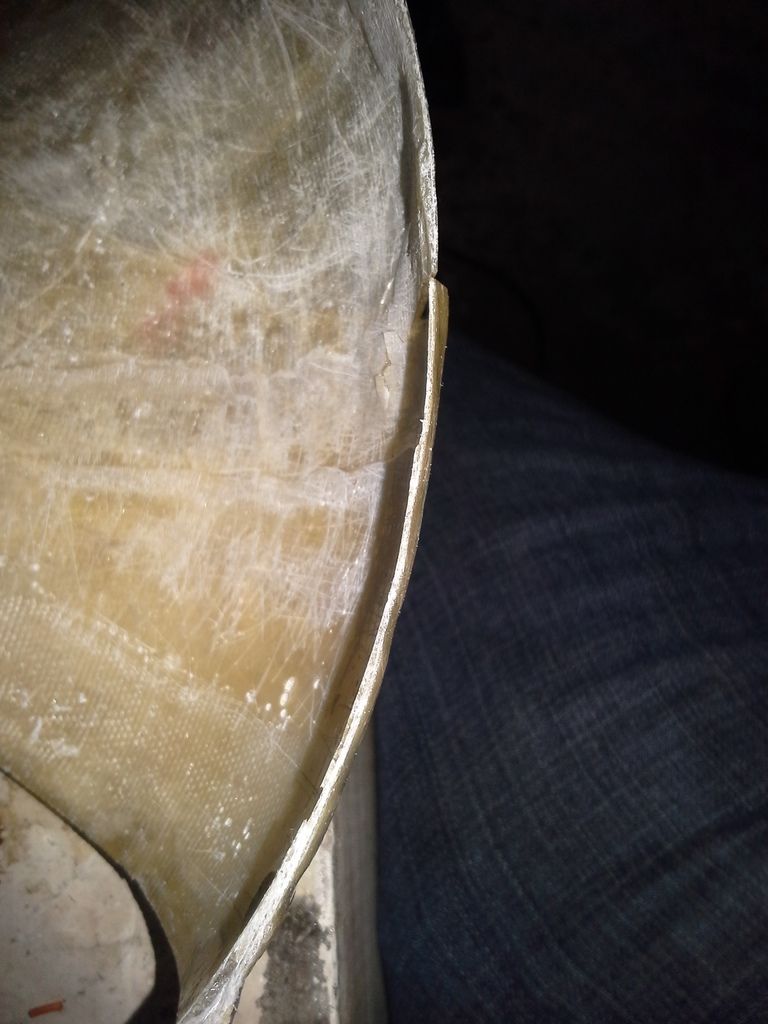
3. Future Plans:
I'm working on the next version, which will have an even smaller width pancake area, so that it will work with a stock battery box on a 3. I also recently bought a vacuum pump and bagging supplies to help with the composite thickness and epoxy penetration. The next version will have an extended section pre-pancake section for the MAF, as well as a booster/valve cover breather ports.
V0 – the learning experience.
A while ago, I 3d printed a mold of squashed intake, dissolved the plastic with a solvent mix and was left with a lightweight composite shell. Once it was done, I realized there were a few issues with the design, which will be apparent below. I still installed and ran it on Racecar for a short time.

The 4” intake matches up to a short velocity stack and a 6” ID K&N filter.

The pancake section fit well in racecar with the 8 cell LiPo, actually with excess room. The original design was modelled for a 3, and didn't fit perfectly lengthwise on the 6.

Limitations:
1. Placement of the MAF
The 90 degree turn and direct termination into the velocity stack meant that the longest area of straight air was in the center of the pancake section. Whoops. This means that clearance to the battery is tight for the MAF connector (but okay). Also, PLA plastic for the MAF housing does not hold up to the heat of the engine bay like ABS- but both plastics would likely have adherence problems to epoxy like below.

Placement of the MAF on top of the pancake section meant that the MAF was outside the dead center of the cross section of the intake- however I doubt this was a huge issue. The car ran well above 1.7v MAF volts, and trouble with calibration at lower voltages can be attributed to a crack that developed in the intake.

2. The Crack
A crack developed in the thinnest area: the outside of the bend with terminated at the turbo inlet.

A cross sectional cut of the intake shows how thin the failed section is, as well as inadequate penetration of epoxy in the fiberglass (see the cracking of the epoxy that sat on top of the fiberglass weave, instead of penetrating.)

3. Future Plans:
I'm working on the next version, which will have an even smaller width pancake area, so that it will work with a stock battery box on a 3. I also recently bought a vacuum pump and bagging supplies to help with the composite thickness and epoxy penetration. The next version will have an extended section pre-pancake section for the MAF, as well as a booster/valve cover breather ports.
